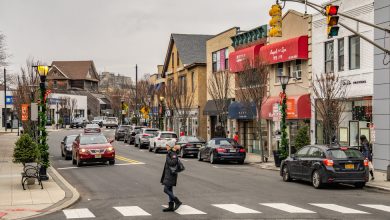American Students Outperformed the Rest of the World During the Pandemic

By now, you’ve probably registered the alarm that pandemic learning loss has produced a “lost generation” of American students.
This self-lacerating story has formed the heart of an indictment of American school policies during the pandemic, increasingly cited by critics of the country’s mitigation policies as the clearest example of pandemic overreach.
But we keep getting more data about American student performance over the last few years, and the top lines suggest a pretty modest setback, even compared to how well the country’s students performed, in recent years, in the absence of any pandemic disruption.
Now, for the first time, we have good international data and can compare how American students performed to those in peer countries that, in many cases, made different choices about whether and when to close schools and whether and when to open them.
This data comes from the Program for International Student Assessment, coordinated by the Organization for Economic Cooperation and Development in almost 80 countries typically every three years — a long-running, unimpeachable, nearly global standardized test measure of student achievement among the world’s 15-year-olds in math, reading and science.
And what it shows is quite eye-opening. American students improved their standing among their international peers in all three areas during the pandemic, the data says. Some countries did better than the United States, and the American results do show some areas of concern. But U.S. school policies do not seem to have pushed American kids into their own academic black hole. In fact, Americans did better in relation to their peers in the aftermath of school closures than they did before the pandemic.
The performance looks even stronger once you get into the weeds a bit. In reading, the average U.S. score dropped just one point from 505 in 2018 to just 504 in 2022. Across the rest of the O.E.C.D., the average loss was 11 times as large. In Germany, which looked early in the pandemic to have mounted an enviable good-government response, the average reading score fell 18 points; in Britain, the country most often compared with the United States, it fell 10 points. In Iceland, which had, by many metrics, the best pandemic performance in Europe, it fell 38 points. In Sweden, the darling of mitigation skeptics, it fell 19 points.
In science, the United States lost three points, about the same decline as the O.E.C.D. average and still above the level Americans reached in 2016 and 2013. On the same test, German students lost 11 points, and British and Swedish students dropped five; performance by students in Iceland fell by 28 points.
In math, the United States had a more significant and worrying drop: 13 points. But across the other nations of the O.E.C.D., the average decline from 2018 to 2022 was still larger: 16 points. And in historical context, even the 13-point American drop is not that remarkable — just two points larger than the drop the country experienced between the 2012 and 2015 math tests, suggesting that longer-term trajectories in math may be more concerning than the short-term pandemic setback. Break the scores out to see the trajectories for higher-performing and lower-performing subgroups, and you can hardly see the impact of the pandemic at all.
Of course, the Program for International Student Assessment is just one test, with all the limitations of any standardized measure. It is not good news, in general, if the world is struggling academically. And none of this is an argument for American educational excellence or never-ending remote learning or a claim there was no impact from closures on American kids or a suggestion that the country’s schools should have stayed closed as long as they did.
It is simply a call to assess the legacy of those closures in the proper context: a pandemic that killed 25 million people globally and more than a million in the United States and brought more than a billion children around the world home from school in 2020. In the 18 months that followed, American schools were not choosing between universal closures and an experience entirely undisturbed by Covid-19. They were choosing different ways of navigating the pandemic landscape, as was every other school system in the world. A good first test of whether the country bungled school closures is probably whether peer countries, in general, did better. The test scores imply that they didn’t.
So why do we keep telling ourselves the self-lacerating story of our pandemic educational failure?
One reason could be that while some state-level testing data shows no correlation between school closures and learning loss, some analysis of district-level data has shown a closer correlation. But this suggests that learning loss is not a national problem but a narrower one, requiring a narrower response.
Another is that testing is blind to other markers of well-being. Chronic absenteeism, for instance, is up significantly since before the pandemic and may prove a far more lasting and concerning legacy of school closure than learning loss. And the American Academy of Pediatrics declared a national mental health emergency — language that has been echoed by the American Medical Association.
But while American teenagers have reported higher levels of emotional distress in several high-profile surveys, here, too, the details yield a subtler picture. In the first year of the pandemic, according to a study supported by the National Institute of Mental Health, 17 percent fewer American teens made mental-health visits to emergency rooms than in the year before; in the second year, they made nearly 7 percent more. According to the Centers for Disease Control and Prevention, the proportion of teenage girls reporting persistent feelings of hopelessness and sadness rose from 47 percent in 2019 to 57 percent in 2021 — a concerning rise, though only slightly larger than the six-point increase from 2017 to 2019. The number of male teens reporting the same barely grew, from 27 percent to 29 percent, having risen much faster from 2017 to 2019.
Each of these data points should probably be understood in the context of mental health surveys of older Americans, such as the General Social Survey, which found that the percentage of American adults describing themselves as “very happy” fell from 31 percent in 2018 to 19 percent in 2021 and those describing themselves as “not too happy” nearly doubled to 24 percent. It is hard to disentangle the effects of school closure here from the experience of simply living through an anxious and disruptive time. To judge by the bleakest standard, youth suicide declined during the period of school closure and returned to prepandemic levels only after schools reopened.
Overall, American adults lost some confidence in the country’s school system in those years, with national approval dropping from 50 percent to 42 percent. But the drop is not from current parents of kids in school, whose approval rose throughout the pandemic, according to Gallup, from 72 percent in 2020 to 73 percent in 2021 to 80 percent in 2022. (Other recent surveys, including ones from Pew and The Times, have found similar postpandemic parental approval, between 77 percent and 90 percent.) Instead, as Matt Barnum suggested in ChalkBeat, the decline has been driven by the perspective of people without kids in those schools today — by childless adults and those who’ve opted out of the public school system for a variety of personal and ideological reasons.
Could we have done better? Surely. We might have done more to open all American schools in the fall of 2020 and to make doing so safe enough — through frequent pooled and rapid testing, more outdoor learning and better indoor ventilation, among other measures — to reassure parents, 71 percent of whom who said that summer that in-person school was a large or moderate risk to their children and a majority of whom said that schools should remain closed until there was no Covid risk at all. We could have provided more educational and emotional support through the darkest troughs of the pandemic and probably been clearer, throughout the pandemic, that the risk of serious illness to individual kids was relatively low.
But we could do better now, too, by sidestepping pandemic blame games that require us both to exaggerate the effect of school closures on educational achievement and the degree to which policymakers, rather than the pandemic, were responsible.





